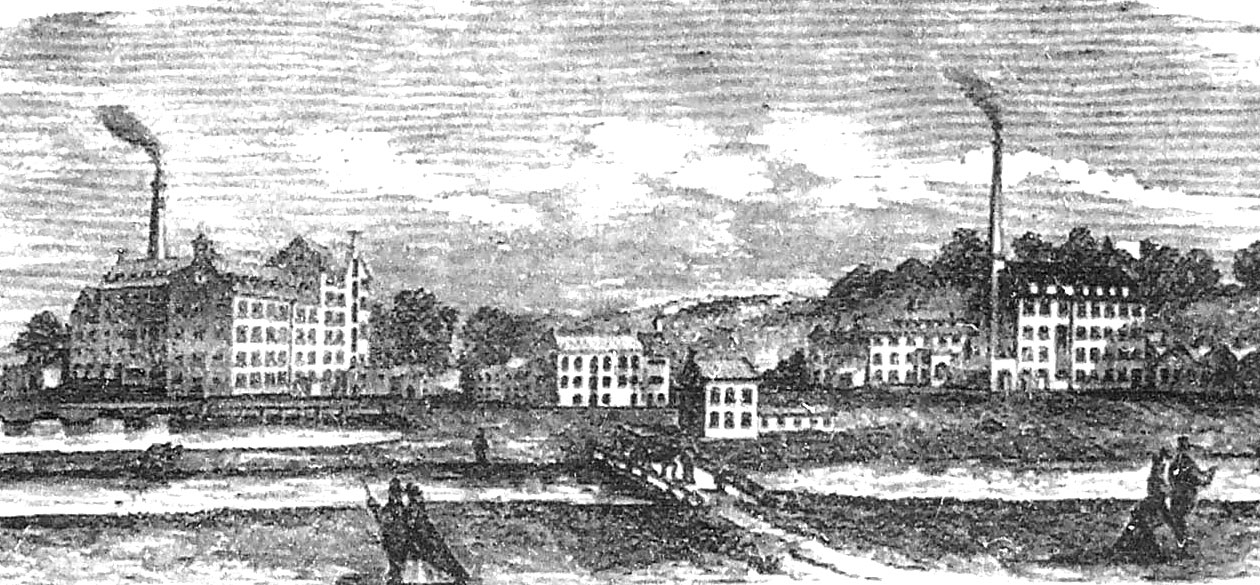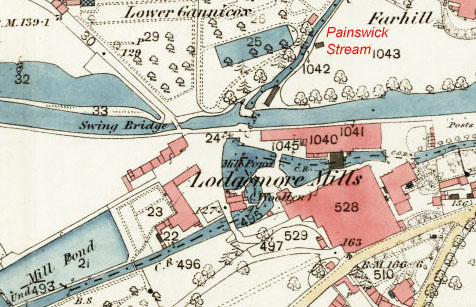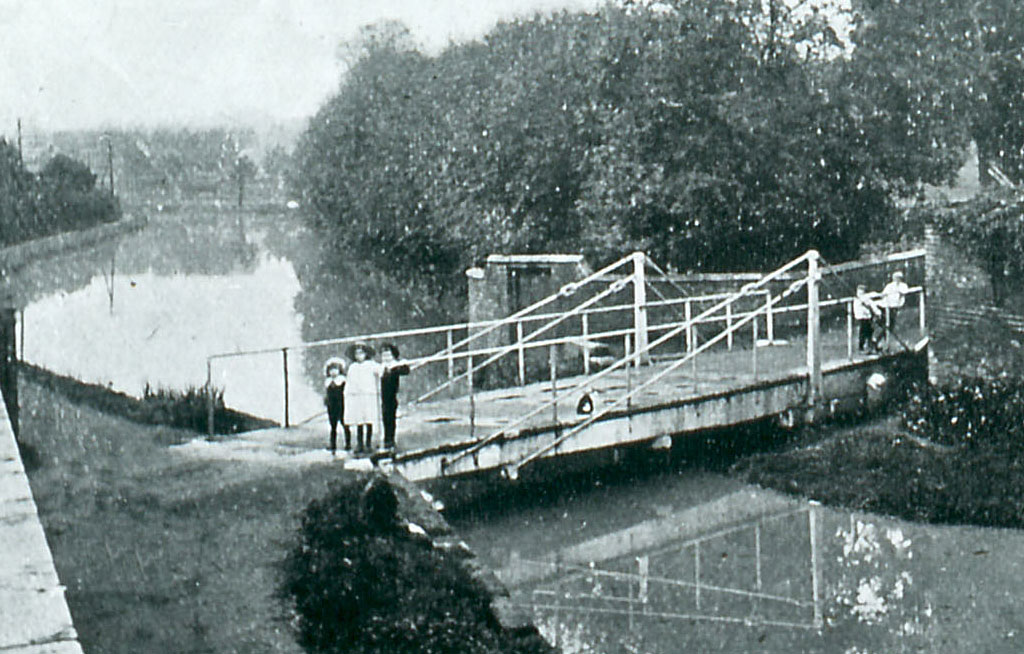

Lodgemore Mill and its neighbour Fromehall Mill were established centres for making woollen cloth long before the canal was built. Both initially relied on power from the River Frome supplemented by the Painswick stream joining from the north-east. After steam power was introduced in the nineteenth century, much coal was delivered to the mill by canal, and this continued into the 1930s.
Lodgemore Mill as illustrated was destroyed by fire in 1871, and the current building was completed in 1875. The mill continues to manufacture woollen cloth and specialises in producing material for covering billiard tables and tennis balls which is exported all over the world.
A walk into the mill yard gives a view of the eighteenth century house of the former mill owner, now used as offices, and a lane to the west past the mill pond of Fromehall Mill leads to the buildings of that mill which are now occupied by small businesses.


The map shows how construction of the canal cut across the line of the Painswick Stream which had to be passed under the canal through what was originally a wooden culvert, although sluices could direct some flow into the canal when needed to maintain its level. For more about this feeder, visit Lodgemore Feeder. An underground pipe could also feed water from the stream into the long mill pond on the north side of the canal.
The Painswick Stream served as a navigation for horse-drawn punts carrying grain the short distance to Stratford Mill (now Tesco). To provide an adequate depth, water was held back by a moveable dam which was raised to let each punt pass.
After the canal was closed to navigation in 1954, the Painswick Stream was turned into the canal to reduce the risk of the River Frome flooding in the Dudbridge area. There is now a slight flow in the section of canal along to the convergence weir at Ebley.


For many years, this old swing bridge provided the main acess to Lodgemore Mill. It was replaced by a lifting bridge as part of the restoration of this section of canal.
The road down to the bridge from the north-west is still known by some locals as Murder Lane. In 1887, a fourteen year old boy was found there dying after being robbed of the wages of workers at Lightpill Mill that he had collected from the bank. For a full account of the incident, visit How Murder Lane Got its Name
When Powell's circus was visiting Stroud in 1869, the manager wanted to stage a special publicity stunt. So he spread the word that a clown in a tub was due to be drawn along the canal by four geese! The Stroud Journal reported that a large crowd gathered, but things did not quite go according to plan as three of the geese escaped from their harness. Nevertheless, Paul Hawkins Fisher recorded in his diary that the fourth goose did draw the tub with the clown in it all the way from Lodgemore Mill to the Ship Inn at Wallbridge.
History of Lodgemore Mill from www.british-history.ac.uk/vch/glos/vol11/pp119-132.
For navigation of the Painswick Stream, see Stroud News 19 Apr 1872 p2.
Circus publicity from Stroud Journal 14 Aug 1869 and www.johnhearfield.com/Dir/OldGlosDiary_home.htm.